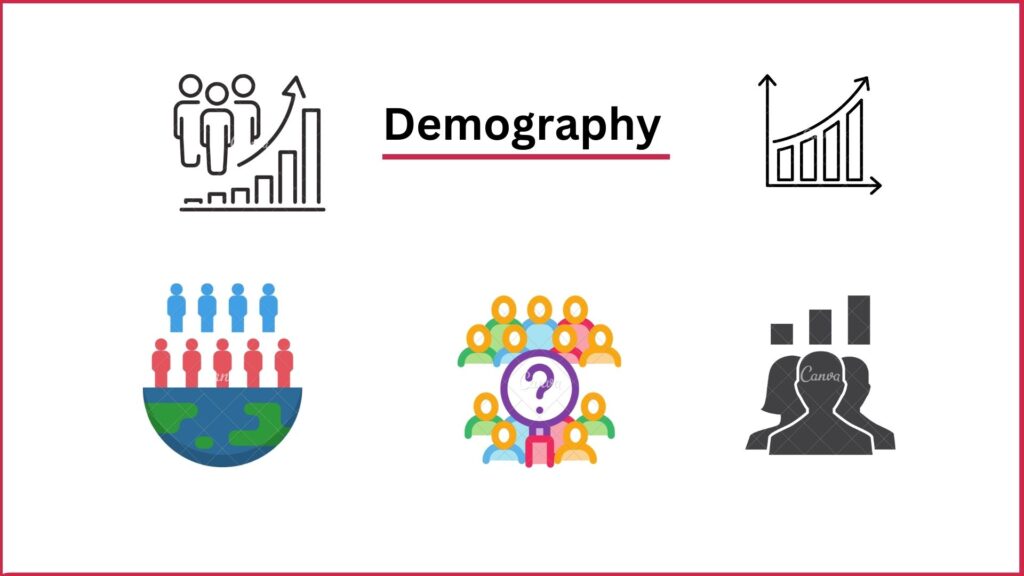Demography : definition, sources, stages & cycle
Demography
We have described in article :
Definition of demography
Uses of demography
Sources of demography
Demographic cycle
stages of demographic cycle
Demographic process

Definition of Demography :
Demography : Demography is the scientific study of human population, which mainly concentrates on
- Changes in population size (growth or decline).
- The composition of the population (age, sex, ethnic groups etc.) &
- The distribution of population in space (urban, rural etc).
Uses of demography :
- Changes in population size (growth or decline).
- The composition of the population (age, sex, ethnic groups etc.) and
- The distribution of population in space (urban, rural etc.)
- It deals with five demographic processes namely fertility, mortality, marriage, migration and social mobility. These five processes are continuously at work within a population determining size, composition and distribution.
- The health and healthcare needs of a population cannot be measured or met without a knowledge of demography
- The knowledge of demography is a prerequisite for making forecasts about future population size and structure. which should underpin healthcare planning.
- Demography is largely concerned with answering questions about how population change and how its changes can be measured.
Demographic process :
Five demographic processes –
1) Fertility : Fertility directly related with size of population.
2) Mortality :
- Increase mortality — Decrease population.
- Decrease mortality — Increase population.
3) Marriage :
- Early marriage — Increase population.
- Late marriage — Decrease population.
4) Migration :
- Immigration — Increases population.
- Emigration —-Decrease population.
5) Social mobility :
- Changes in social status.
- Upgrade.
- Degrade
Demographic cycle :
Demographic cycle : The history of world population since 1650 suggests that there is a demographic cycle of S stages through which a nation passes —
- 1st” stage (high stationary) : This stage is characterized by a high birth rate and a high death rate. which cancel each other and the population remains stationary. eg. India was in this stage till 1920.
- 2nd stage (early expanding) : The death rate begins to decline while birth rate remains unchanged leading to increase in population growth. A number of countries in south Asia & Africa are in this stage.
- 3rd stage (late expanding) : Death rate declines still further, and the birth rate tends to fall. The population continues to grow became births exceed deaths, e.g. Bangladesh, India, China, Singapore etc.
- 4th stage (low stationary) : In this stage, both birth rate and death rate fall. As a result, the growth of population becomes stationary, eg UK, Denmark, Sweden. Belgium etc.
- 5th stage (declining) : The population begins to decline because birth rate is lower than the death rate. Some east European countries, notably Germany and Hungary are experiencing this stage.
Stages of demographic cycle where the population remain static :
- 1st ” stage (high stationary) : This stage is characterized by a high birth rate which cancel each other and the population remains stationary, e.g. India was in this stage till 1920.
- 4th stage flow stationary) : In this stage, both birth rate and death rate fall. As a result, the growth of population becomes stationary, e.g. UK Denmark, Sweden, Belgium etc.
Stages of demographic cycle where population growth is not static :
- 2nd stage (early expanding) : The death rate begins to decline while birth rate remains unchanged leading to increase in population growth. A number of countries in south Asia & Africa are in this stage.
- 3rd stage (late expanding) : Death rate declines still further and the birth rate tends to fall. The population continues to grow because births exceed deaths, e.g. Bangladesh, India, China, Singapore etc.
- 5th stage (declining) : The population begins to decline because birth rate is lower than the death rate Some east European countries, notably Germany and Hungary are experiencing this stage.
Sources of demography :
- Decennial census (major source).
- National Sample Survey and Vital Registration of Bureau of Statistics.
- Small Sample Surveys conducted by population Development and Evaluation Unit (PDEU) Planning Commission.
- Bangladesh Institute of Development Studies (BIDS).
- Demographic surveillance area of ICDDR,B
- Demographic and Health Survey (DHS), NIPORT
- Bangladesh Fertility survey, NIPORT.

It’s actually a great and helpful piece of info. I’m satisfied that you just shared this helpful info with us. Please keep us up to date like this. Thank you for sharing.